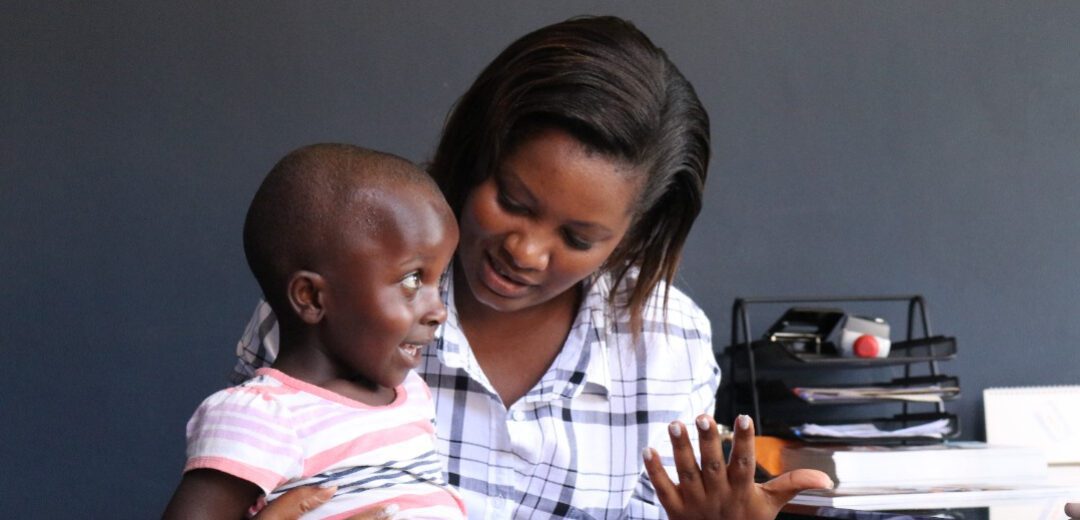
A haven away from inhumane traditions
Nice Nailaintei Leng’ete’s work, which began as a means of protecting herself, has saved thousands of young girls from female genital mutilation and early marriage. Now, she is mentoring young change-makers in her community to be ambassadors of her work; to create a world where girls will never have to suffer this form of gender-based violence.
From a look across the horizon, Mt. Kilimanjaro in Tanzania stands out brilliantly against the skyline of Kimana town at 9 am Friday. The small Maasai town in Kajiado County, located 226km away from Kenya’s capital, is home to an oasis of hope for Maasai girls. Nice Place Foundation was founded a year ago to protect young women from the harmful practices of female genital mutilation and early marriage.
You could be forgiven for assuming the weather is always as pleasant as it is this morning. However, this region is predominantly arid. A glance at the dusty terrain, sparse shrubbery, and towering cacti reveals that it has been a while since the last significant rain.
As we make our way to the Foundation, the Maasai herders holding wooden rods for support, with bright red shawls straddled across their slender bodies, capture one’s attention. They follow their livestock keenly, who appear to be feeding on the yellowish-brown grass, but there are mostly dry patches left where there was grass.
In contrast, at the Foundation, a lush green lawn winds its way to a striking concrete administration building. It is flanked on either side by what appears to be a boarding house and a classroom building. Two enormous paintings of Maasai women, dripping in traditional ornaments greet us at the entrance. From what I can tell, this is a peaceful and safe place where girls can pursue their goals and realize their full potential.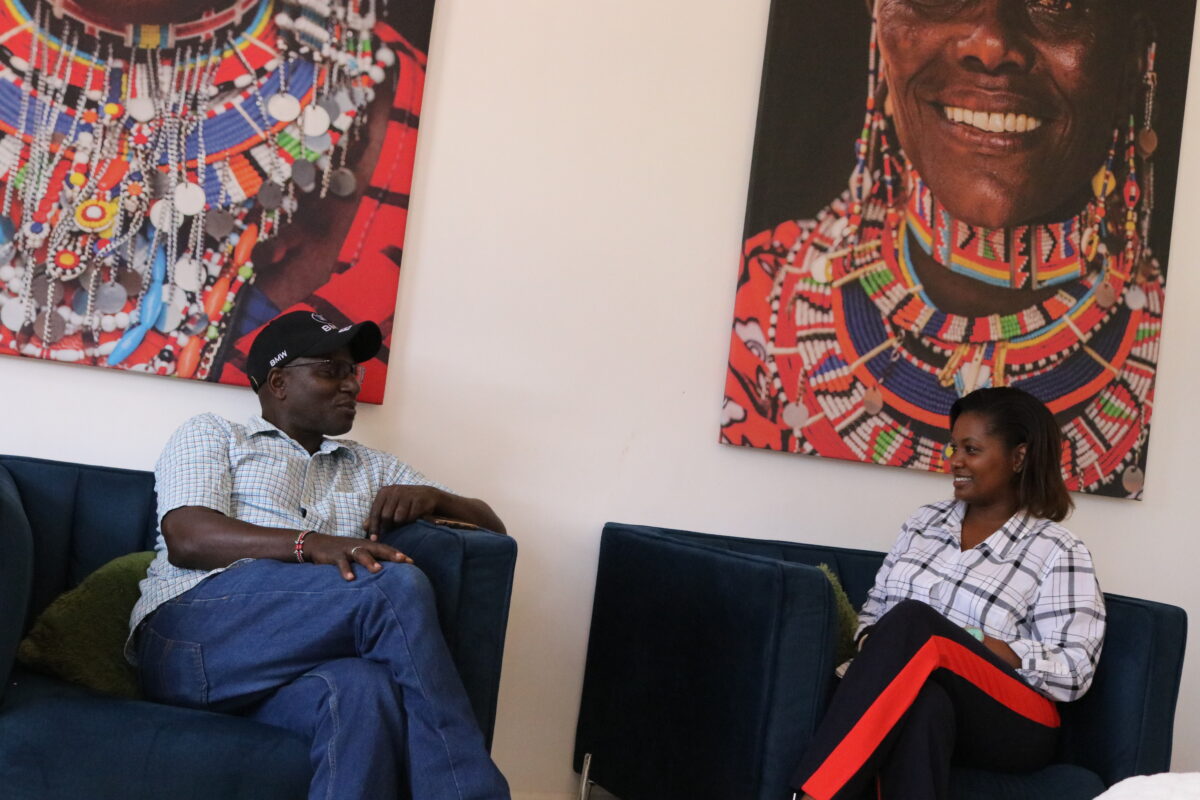
This is a dream come true for Nice Nailaintei Leng‘ete and the countless young girls who will see their hopes and ambitions flourish, thanks to her work. It is in this village that she was born and is revered for her resilience, persistence, and spirit of service to her community.
For Nice, success was incomplete unless it was also felt by other girls, women, and members of her community. It has been a long and treacherous journey for her to get to where she is today. She has faced rejection from her community and family after she refused and fled female genital mutilation, one of the most deeply held practices in her community; the Maasai.
The Maasai are a semi-nomadic indigenous tribal community in East Africa primarily found in Kenya and Tanzania. Their lives revolve predominantly around their cattle, which they depend on for meat, milk, and blood – the main components of their diet and also a measure of wealth. They are renowned around the world for their unique cultural traditions and customs. While admirable, the strength of their culture arguably makes it resistant to change, especially traditions as deeply ingrained as the practice of FGM.
Female genital mutilation is done by different societies all over the world for different cultural traditions and religious beliefs. For the Maasai, it is a rite of passage from girlhood to womanhood.
In Kenya, it was declared illegal in 2011, with a steady decrease in its prevalence being witnessed since then. However, she says a lot more effort needs to be channelled especially in communities living in rural and marginalized areas like Kajiado.
According to the UNFPA, over 200 million women and girls alive today have gone through female genital mutilation while a staggering 4.2 million girls are at risk of being subjected to it annually. Nice is working hard to reduce this number so girls and women can no longer be subjected to this form of gender-based violence. However, changing perspectives, especially around traditional beliefs and cultures can be quite a daunting task. By refusing and escaping, she took a lesser-travelled road at a very young age.
Nice has fond memories of her childhood, one that she describes as normal as any other girl in her community. The usual tasks were fetching and splitting wood, as well as helping around the house and at school. This is until one reaches a certain age. As is tradition, girls have to undergo female genital cutting as a rite of passage. Only then will they earn their identity as dignified women in the community.
‘After witnessing the pain many had been through, I knew I did not want to go through the same as I also wanted to be in school, something that would no longer be possible for me as when one was cut they were seen as women ready to get married and start a family,’ she says.
This is what happened to her sister after she sacrificed herself for Nice. She did this in the hope that if she (her sister) made it through the procedure, then Nice would no longer feel pressured by her family to undergo it. This sacrifice deeply affected Nice. She wasn’t able to save her own—quite an overbearing burden for a girl her age to carry—so she vowed to save other sisters all over the world.
Her relentless refusal to undergo FGM was not taken lightly by her family and her community. She was referred to as *entapai, a girl who had brought shame to her family. But she never caved in.
A question that always lingered in her mind was, if the practice was as good as she was made to believe, then how could it bring so much pain and sometimes death? Young as she was, barely 8 years old, she knew something was wrong with it but she couldn’t quite put a finger on it.
Working with the community
‘Advocating against FGM should be looked at from a very broad lens as there are numerous aspects that contribute to it,’ she tells us. ‘This I came to learn while still in high school when I got an opportunity to work with Amref as a trainee under a Dutch-funded project called the Amref Nomadic Youth and Reproductive Health project.’
‘Under this training, they identified young people and brought us in to train on issues of sexual and reproductive health rights. We had a chance to pick a topic of interest that we would want to go to and advocate for our communities.’
‘I learned extensively about female genital mutilation and the potential long-term and immediate health consequences associated with it, including infertility, cysts, abscesses, haemorrhaging, and in the worst case scenario death. I already knew it was terrible, but now I knew I would be able to advocate better from a point of information with this knowledge and skills,’ she says.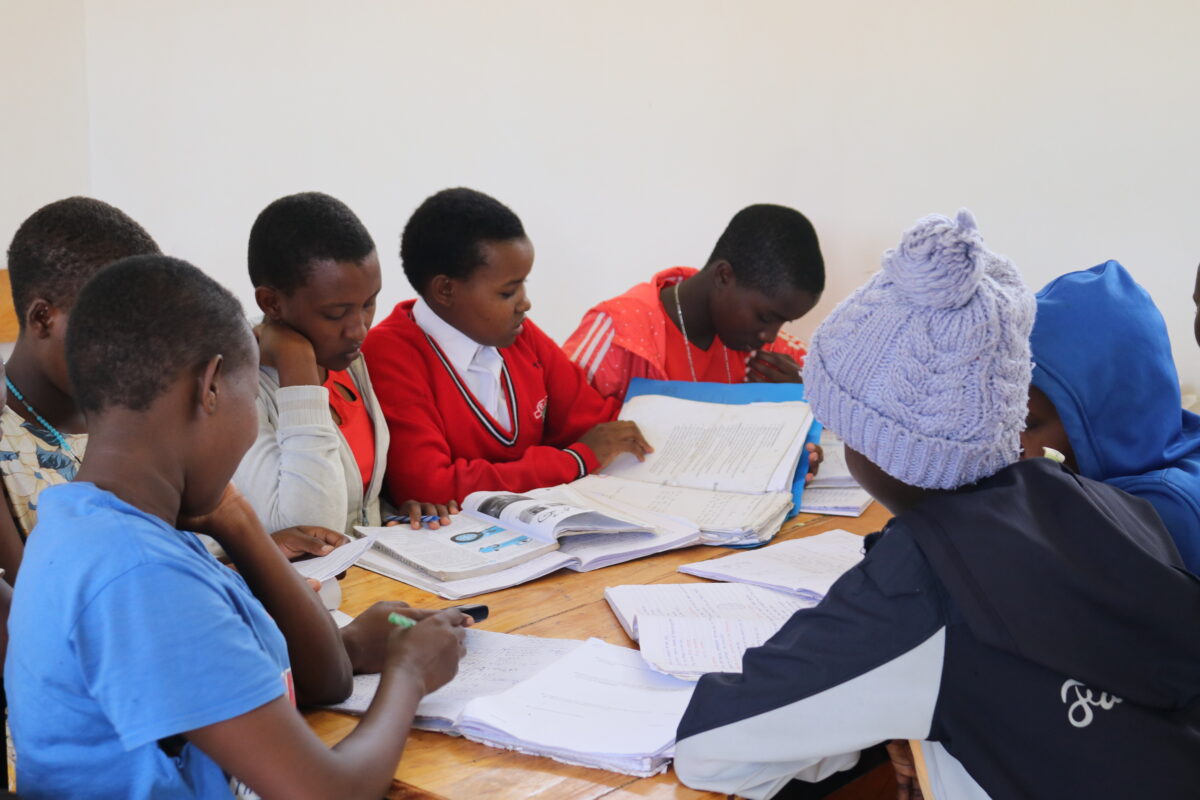
For her, this meant working with her people, a people that saw her as an *entapai and a child who had not transitioned to womanhood. What stoked the flames more was being a woman in a deeply patriarchal community like hers, where a woman has no place in addressing men.
With the odds stacked against her like that, anyone would be tempted to quit but she was determined to stick it out till the end. Amref had taught her a lot, and using her knowledge and skills, she strategically won over the confidence of her community.
At the time, FGM was just one of the many problems bedevilling her community. They also wanted to find ways to combat HIV/AIDS and improve access to clean water and vaccinations. It wasn’t until she began focusing on these issues as well that she saw a significant increase in the number of male attendees at her meetings – a tremendous milestone, she says. With this, she was now able to naturally shift the conversation to the issue of FGM.
‘The process was not easy, but it is easier to be patient when you understand change is gradual,’ she says.
‘Most people never say this about their workplaces but Amref has been a very good employer,’ she says with a hearty laugh. ‘I learned to approach this problem with the help of those in my community. I learned to take a broad view and to realize that everyone in the community is affected by FGM, which means involving everyone is the solution.’
Through their partnership, Nice and Amref have saved the lives of over 20,000 girls in Kenya and Tanzania from undergoing the cut.
The Nice Place Foundation
What started as a matter of protecting herself has evolved over the years to protect thousands of other girls from the vice.
She has always wished she and her sister had a safe place to flee to. Fortunately she is now able to provide what she and her sister never had; for girls in her community who are still at risk. She believes that just like her, education is the key to saving countless girls’ lives and the future of her community.
‘A girl can be married off for the equivalent of three cows which would not be enough to support her family because there is also an economical motivation behind FGM and early marriage. We are trying to show the community that if a girl is educated and empowered she is more valuable at the appropriate age for marriage. This is because she can buy cattle for her family for a lifetime,’ she says.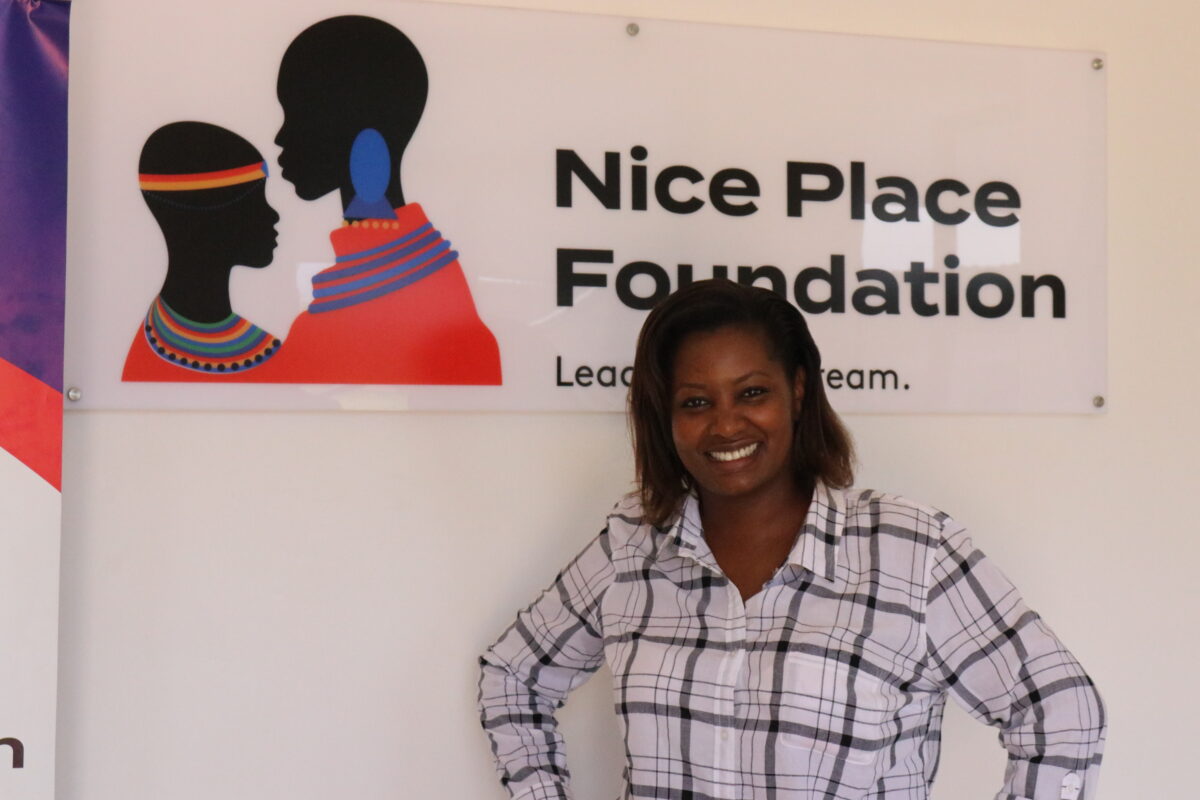
At the Foundation, they do this under three programmes: the leadership academy, safe rescue and reintegration, and; education and scholarship.
The three programmes work together to empower girls through education. This will enable them to advocate for ending FGM and early marriages which are still very rampant.
In the leadership academy, girls are trained in leadership, advocacy, personal development, and even computer coding to pique their interest. This is also done to try and bridge the gap in pursuing an information communication technology course. This is because, for every twenty people doing an ICT course, only one is a girl.
Under the Leadership Academy programme, they have trained and graduated 245 change makers in the last year.
‘They are the ones who will become ambassadors to take the message they learn from the Foundation to the grassroots and their communities. They are the new change makers,’ Caroline Datche, Programme Manager, tells us.
The Leadership Academy is primarily for girls who have finished high school and those who are still attending. The training normally lasts for a period of nine to twelve weeks for those who have completed their education, and only six weeks for those who are still in school as they have to go back to school when they re-open.
‘We do not offer basic education but we work with schools so that they can offer remedial classes for girls who might be behind their school schedule for different reasons.’
‘With training, we ensure that we have an all-round leader, with effective social skills and communication etiquette that enables them to carry on a successful advocacy campaign as a lot of lobbying is required for things to change,’ Carol says.
When they return home, they start advocating for change within their families, the surrounding community, and their neighbouring schools.
‘We also try to understand the environment we come from, as women are not given opportunities to lead or make decisions,’ Jancan Limo, lead instructor of the Foundation tells us.
He gives a clear example of the just concluded election where no single woman in Kajiado County was elected. ‘We would not have any women representing us were it not for the quota in the constitution. We help the girls understand that it is just a mindset, not a limitation. We are giving them skills by using examples to show that they can take on leadership roles as well,’ he explains.
Carol says they have seen a shift in the value of education based on the number of people seeking scholarships under their education and scholarship programmes.
‘As of now, we are not able to provide scholarships to more girls. However, we hope that soon we will be able to support more bright and needy girls who are at risk of FGM and school dropouts. This will enable them to continue their education. Currently, the demand for education is high. Girls are more vulnerable, but we have also given a chance to a few boys to benefit from our scholarship programs.
‘We would also like to create that balance as we need the boys’ voices in support of our course. The beneficiaries are expected to do well in this year’s Kenya Certificate Secondary Examinations.’
Carol concludes, ‘We want to move beyond Kajiado South. We want to expand beyond the country so that we can create more change makers.’
The New Change-makers
The Foundation currently houses 39 girls. This is where 18-year-old Jane Ngoitai Sisia lives when she is not at school. She cuts across the concrete pavement of the Foundation in her brightly coloured school uniform and greets us with a friendly smile. We make our way into a warm-toned office. A picture of Nice and three girls hanging on the wall brightens the space, along with some pink velvet chairs in each corner of the room. From a previous conversation with the Foundation’s counsellor, this is where they first engage rescued girls. When they arrive, most have been traumatized, so a soothing tone helps them rest.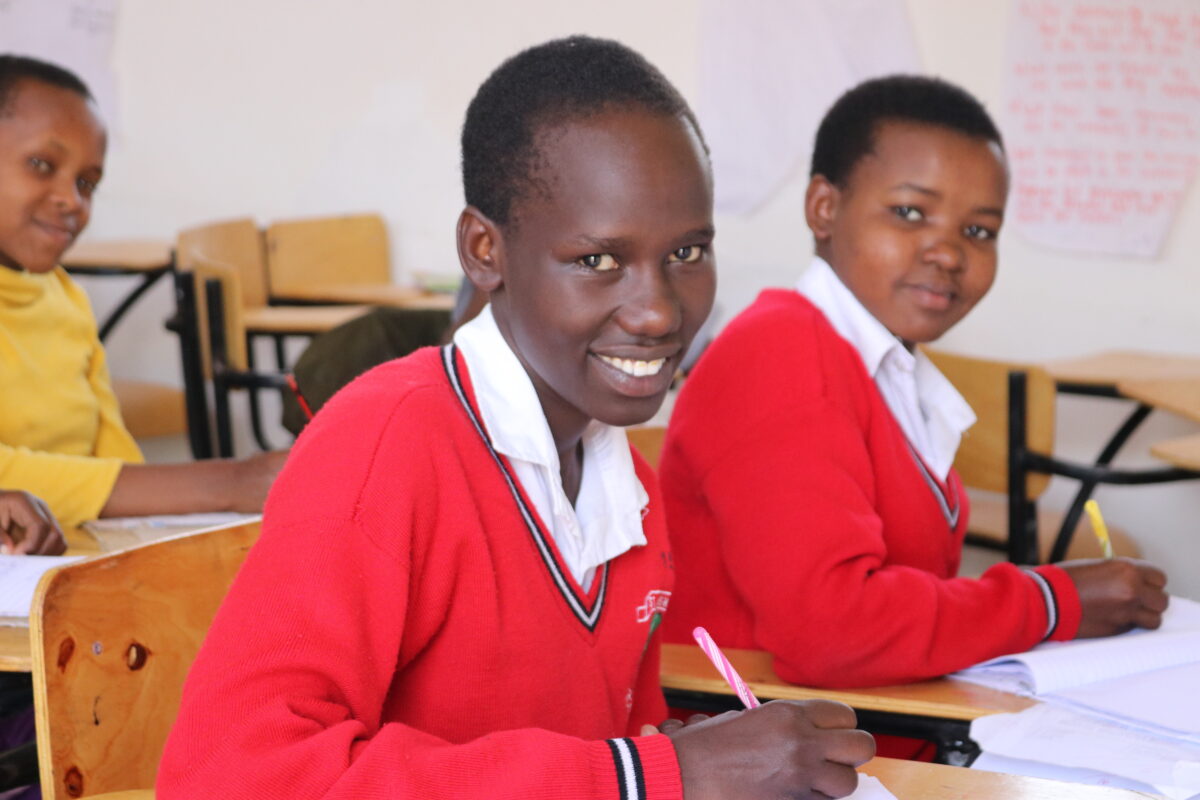
It is impossible to ignore Jane’s infectious vivacity, her eloquence, and the confidence radiating from her eyes as we sit next to each other.
Like many other girls at the Foundation she vividly remembers her father bringing up FGM and marriage immediately after she completed primary school. ‘My father did not have any money to support me anymore, so he thought that was what was right for me,’ she says.
Jane comes from a family of cutters, meaning that every woman in her family can do the cut and has been through it, so she wouldn’t have been exempted.
‘They simply buy a razor blade,’ she explains. ‘This practice is performed in a very unsterile and unhygienic environment.’ She speaks of a relative back home whose condition has worsened to the point she fears that she might not survive due to excessive bleeding.
After witnessing FGM’s devastating effects first-hand, she vehemently objected. But this was not taken lightly. ‘My family disowned me because they felt I was a burden to them. Several of my siblings frequently engaged in pointless fights and chases with me. And a few of their friends even made a pass at abusing me.’
The fact that she was able to find safety at her school ultimately saved her: ‘I ran to my school which is 40km away with no belongings at all. Luckily, the school’s principal knew of the Foundation and he immediately called Nice.
‘She bought me everything, took me to the hospital, and made sure I got counselling. Even though the Foundation hadn’t even begun, Nice’s sister, Soila, took me in until it was established.’
It is believed that FGM can be eradicated within one generation. The movement created by Nice at the Foundation holds the potential to make this a new reality for girls and women everywhere.
Four years after being rescued from the cut, Jane, who is in form four now, is running her movement, the Pamoja Education Forum.
The objective is to help and empower youth to reach their goals. She organizes the forum with the help of the chairman of her primary school, the deputy head teacher, and two of the only 3 people in her area who are at university. Her target is young people, both in high school and primary. So far she has managed to engage 70 students.
‘In the committee, I am the only girl and many women cannot believe that a girl can have a voice among men. But I want to show girls in this community that it is possible to achieve their dreams.’
‘They are used to seeing only men in leadership positions, while women carry babies and are housewives. I want to be an example just like Nice. I want them to have a voice and be able to stand up for themselves. This is because they are still at risk of FGM and early marriage while boys are also dropping out because of drugs.’
After staying for a while at the Foundation, the girls are slowly reintegrated back into the community and reunited with their families. The gradual process begins with a few visits to the family with the girl accompanied by staff from the Foundation. At times they have to go with authority figures like area chiefs and police because the reception from the family may not turn out pleasantly.
When they know a girl is safe and her family has accepted her fully, only then do they let her go back. The girls’ safety is of the utmost importance, so they do a couple of follow-ups afterwards to ensure that she is safe.
So far, they have been able to reintegrate one girl, with her family pleased with the transition. Those who are reintegrated are to serve as examples and educate the family, the community, and their peers. You can see from Moran’s remark that they cannot marry a girl who hasn’t been cut.
Jane is an example. She says that her family is now very proud of her, including her brothers who were forcing her to get married. ‘They now want people to know I am their sister,’ she says proudly.
‘I can speak out and educate my fellow girls and even boys because I know who I am and what I want to achieve.’ She adds that the training in advocacy, leadership, and personal development they get at the Foundation has greatly helped her.
Jane would like to be a nurse so that she can teach her community the importance of giving birth in a hospital, family planning, and immunizations. She has high hopes for the future and plans to launch another movement immediately after graduating from high school. This will be in continuation of the work that Nice began called the Nice Advocacy Movement. Her peers and community will be empowered and challenged about FGM.
Jane concludes by stating that Nice inspired the drive and determination she possesses today.
A community-led Initiative
‘I feel a lot of fulfilment when I see the transition the girls have made. From when they came up to now,’ Nice says.
‘Having worked with Amref on so many projects in different countries has enabled me to interact with so many communities. Through this, we were able to start the alternative rites of passage movement together with the community. It is intended to serve as a substitute for FGM in Kenya and Tanzania among the Maasai communities.’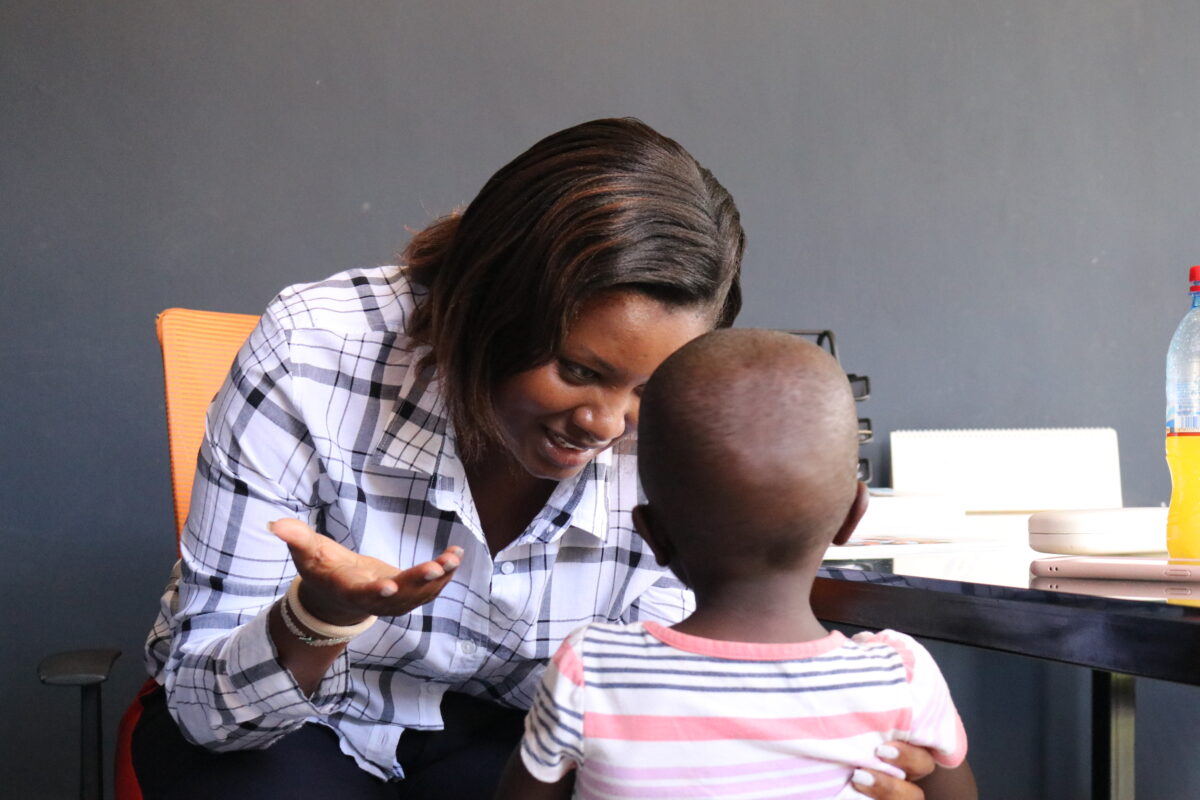
‘It eliminates the cut in the ceremony but keeps what’s valuable, like teaching young people about sexuality, receiving blessings from elders, and continuing to educate young women. It also helps to keep communities’ valued cultural traditions alive and well.’
‘We, the Maasai people, believe that our traditions are honourable and beautiful; however, we believe that the practice of forcing young girls into marriage and pregnancy is harmful and should be abolished while preserving the other, more positive rituals. We hope that the community will adopt new cultural traits, behaviour patterns, and social norms, as well as create new social structures.’
However, she cautions that this was only intended to work for the Maasai community as different communities practice FGM for different reasons. ‘An intervention in Kenya may not be effective for a community practising the same in Ethiopia. It’s imperative to understand the communities you are working with,’ she says.
As an example, she cites the success of community forums that facilitate communication between parents and their children. The women may want it to end, but it won’t unless the men of the community (who make the critical decisions) step up and say they’re willing to marry uncircumcised girls.
‘We need everyone to be an ambassador and to speak up. That’s why we hope to have the capacity to train even more girls. The girls who have benefited from our advocacy are now becoming ambassadors and spreading our work. Similar to Jane, the girls at the Nice Foundation have expressed an interest in laying the groundwork and initiating social change, which bodes well for our future success because it means more ‘Nices’ will be available to help.’
‘It’s a broad process, but it’s having a positive effect,’ she says.
‘The progress we’ve made hasn’t been solely the work of Nice and Amref, but rather of many organizations and individuals with various areas of expertise. This includes the men and women of the community who actively sought out and embraced transformation.’
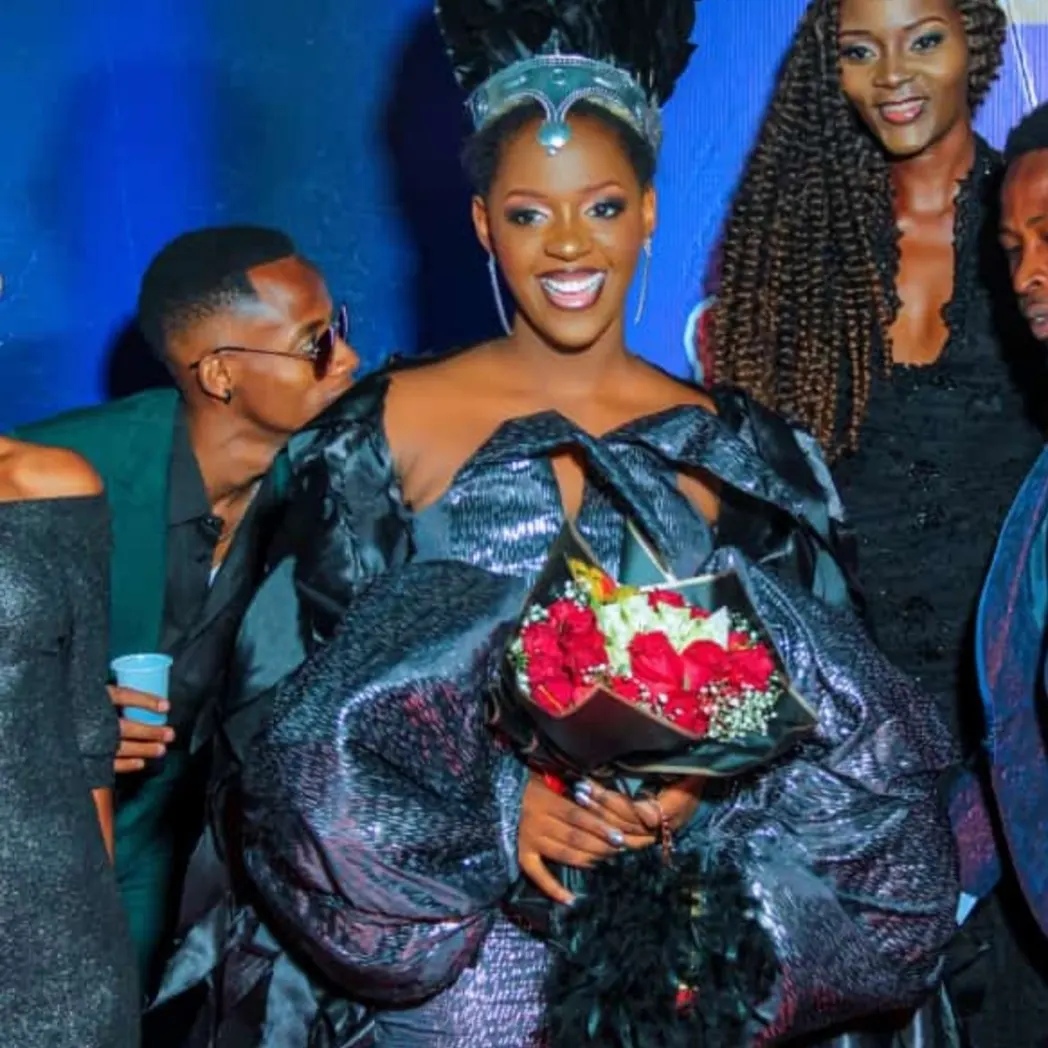
Leave a Reply